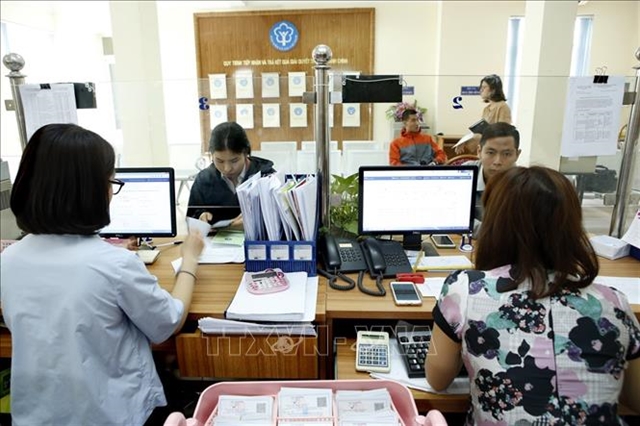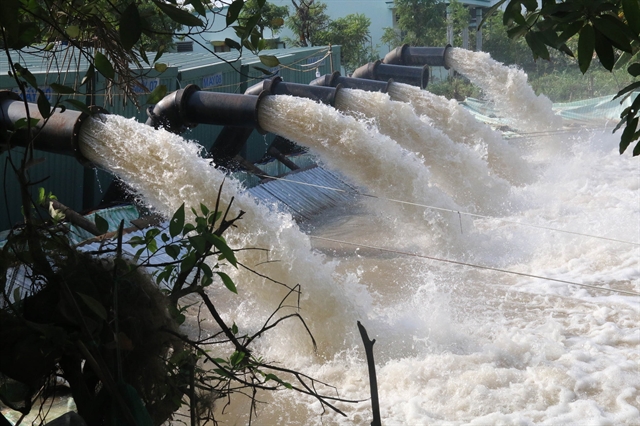 Environment
Environment

The Cửu Long (Mekong) Delta is taking steps to ensure sufficient fresh water supply for household use and agricultural production in areas affected by saltwater intrusion and drought.

|
| Pumping irrigation water for agricultural production in Tiền Giang Province’s Gò Công Đông District. — VNA/VNS Photo Minh Trí |
HCM CITY – The Cửu Long (Mekong) Delta is taking steps to ensure sufficient freshwater supply for household use and agricultural production in areas affected by saltwater intrusion and drought.
More wells will be drilled and water pipes installed to transport water from water supply plants to households in these areas, the Ministry of Agriculture and Rural Development said in a document sent to the Prime Minister on Thursday.
The delta will also set up more public tap water faucets, plastic water containers and large plastic water bags at the offices of People’s Committees and cultural houses in communes to supply fresh water for local residents.
Water tank trucks will provide fresh water to about 40,000 households in the provinces of Kiên Giang, Bến Tre, Long An, Cà Mau and Trà Vinh.
Bến Tre and Trà Vinh will install facilities to filter saltwater and brackish water and turn it into freshwater for local residents in affected areas.
On February 9 – 11, Nguyễn Xuân Cường, Minister of Agriculture and Rural Development, visited several provinces to inspect the effects of saltwater intrusion and drought.
The delta, the country’s largest rice, fruit and seafood producer, is facing saltwater intrusion during the 2019 - 20 dry season.
It is expected to reach its peak this month and in the first half of March, and then fall gradually by mid-March to June, according to the National Centre for Hydro-Meteorology Forecasting.
Saltwater intrusion is expected to enter 55 kilometres deep into the delta’s main rivers from February 21 – 27, down 20 kilometres against mid-February.
On March 7 – 15, water with a salinity rate of 4 grammes per litre is expected to enter 80 kilometres deep into the delta’s main rivers, an increase of 5 kilometres against mid-February.
Before the dry season, delta authorities, anticipating saline intrusion, decided to plant the winter-spring rice crop one month earlier and dredged canals to store irrigation water. They also upgraded and built new irrigation projects and saltwater prevention sluices.
The measures have helped mitigate the damages to agricultural production, according to the ministry.
About 60 per cent of the delta’s 1.5 million hectares of the winter-spring rice have been harvested, and the remaining areas are blooming or ripening and will be harvested in one to three weeks. The remaining areas are safe as they still have irrigation water for rice.
However, saltwater intrusion is threatening about 29,000ha of spring-summer rice because of a shortage of irrigation water. The cultivation of spring-summer rice in the area is unstable and should be switched to other drought-resistant crops, said the ministry.
Saltwater intrusion is also causing a shortage of daily use water for 79,700 households in the provinces of Bến Tre, Sóc Trăng, Kiên Giang, Cà Mau, Bạc Liêu and Long An.
Several provinces in the delta have asked the Government to provide funds to help them upgrade and build saltwater prevention sluices, pumping stations and temporary dams.
Sóc Trăng Province, for instance, has asked for VNĐ1.37 trillion (US$59 million), while Long An Province has asked for VNĐ170 billion ($7.3 million). — VNS




